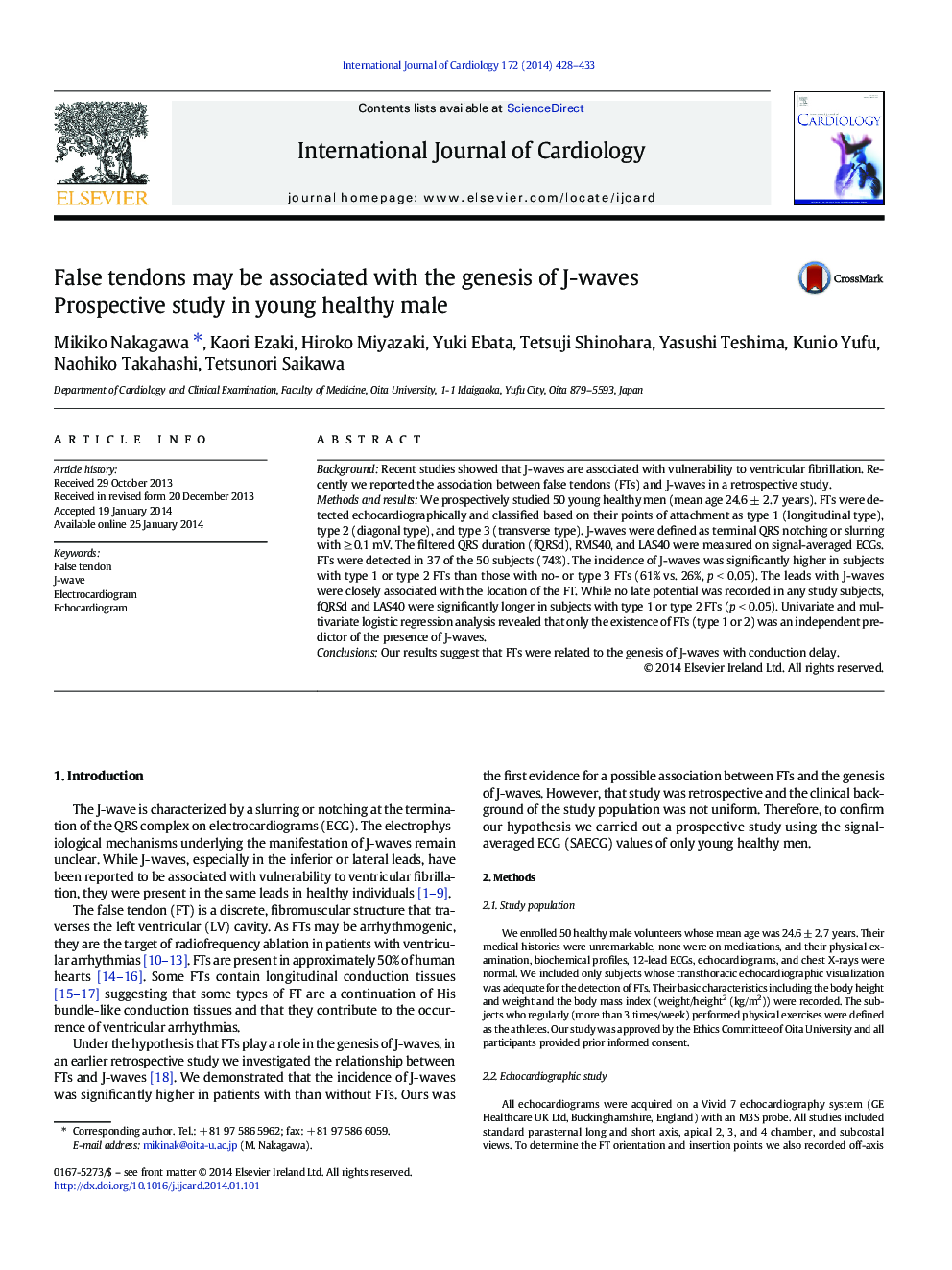| کد مقاله | کد نشریه | سال انتشار | مقاله انگلیسی | نسخه تمام متن |
|---|---|---|---|---|
| 5972035 | 1576191 | 2014 | 6 صفحه PDF | دانلود رایگان |

BackgroundRecent studies showed that J-waves are associated with vulnerability to ventricular fibrillation. Recently we reported the association between false tendons (FTs) and J-waves in a retrospective study.Methods and resultsWe prospectively studied 50 young healthy men (mean age 24.6 ± 2.7 years). FTs were detected echocardiographically and classified based on their points of attachment as type 1 (longitudinal type), type 2 (diagonal type), and type 3 (transverse type). J-waves were defined as terminal QRS notching or slurring with â¥Â 0.1 mV. The filtered QRS duration (fQRSd), RMS40, and LAS40 were measured on signal-averaged ECGs. FTs were detected in 37 of the 50 subjects (74%). The incidence of J-waves was significantly higher in subjects with type 1 or type 2 FTs than those with no- or type 3 FTs (61% vs. 26%, p < 0.05). The leads with J-waves were closely associated with the location of the FT. While no late potential was recorded in any study subjects, fQRSd and LAS40 were significantly longer in subjects with type 1 or type 2 FTs (p < 0.05). Univariate and multivariate logistic regression analysis revealed that only the existence of FTs (type 1 or 2) was an independent predictor of the presence of J-waves.ConclusionsOur results suggest that FTs were related to the genesis of J-waves with conduction delay.
Journal: International Journal of Cardiology - Volume 172, Issue 2, 15 March 2014, Pages 428-433